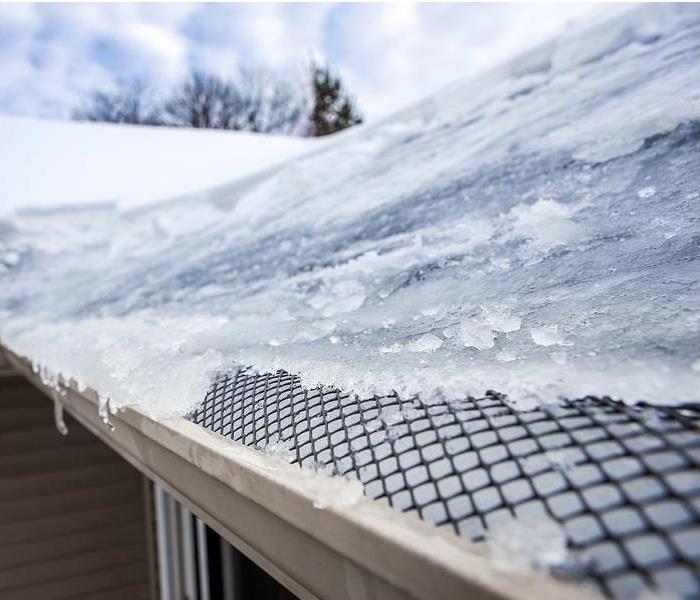How to Prevent Ice Dams
1/17/2023 (Permalink)
Icicles hanging off the edge of the roof can be beautiful scenery on a winter day, but those frozen crystals can cause some ugly problems for your home.
Icicles are formed by the combination of snow-covered roofs and freezing weather. These conditions are what leads to ice dams—a ridge of ice that forms at the edge of the roof that prevents melting snow/water from draining.
Dams can be a real pain in the ice. They can tear off gutters, loosen shingles and cause water to back up, resulting in water pouring into the house. This can lead to paint peeling, floors warping and ceilings getting stained and sagged.
Moisture entering the home from ice dams can also cause respiratory issues for your family, resulting from mold and mildew growth.
What can be done to prevent these damn...err..dams?
Clear the Roof
Instead of waiting for warm weather to solve the problem, you can take matters into your own hands.
The first short-term move is to stop any leaking.
You can set up a box fan in the attic and aim it at the bottom of the roof where water is leaking in. This will freeze the water and stop the leak.
Another effective move can be taking a long-handled aluminum roof rake to scrape off snow.
You can also de-ice your roof with pantyhose.
Seriously.
By filling the leg of a pair of panty hose with a calcium chloride ice melter, you can melt through the ice and snow to create water flow. Lay the hose so it crosses the ice dam and overhangs the gutter.
Uniform Roof Temperatures
Ice dams are caused by nonuniform roof surface temperatures.
For dams to form, the top of the roof must be above 32 degrees, while lower surfaces are below freezing.
When the snow on the top of the roof melts, water flows down to the bottom of the roof and freezes, creating the dam.
In most cases, the reason for the lack of uniform roof temperatures is due to heat from the house warming the roof.
One way to reduce heat escaping is by adding insulation. This will make the top surface temperature of the roof closer to surrounding attic temperatures, creating more uniformity.
This step should come after making the ceiling air tight so that no warm, moist air can flow from the house into the attic. For an unsealed attic hatch or whole-house fan, you can use weatherstripped caps made from foil-faced foam board held together with aluminum tape.
Heating cables can also create uniform roof temperatures. By heating the roof from the outside instead of blowing in cold air from the inside this tactic can equalize your roof’s temperature.
More Solutions
There are several other tactics you can take to solve your ice dam issue.
Double check that the ducts in your house connected to the kitchen, bathroom and dryer vents all lead outdoors through the roof or walls, but not through the soffit. Seal and insulate ducts by spreading fiber-reinforced mastic on the joints of HVAC ducts and exhaust ducts, and cover them with R-5 or R-6 foil-faced fiberglass.
Use caulk to seal around electrical cables and vent pipes with a fire-stop sealant. You should also look for spots where light shines up from below or the insulation is stained black by dirt.
Recessed lights should be replaced with insulated contact (IC) rated fixtures, as old-style lights can’t be insulated without creating a fire hazard.
Bridging the gap between the chimney and house framing with L-shaped steel flashing that’s kept in place with unbroken beads of a fire-stop sealant is another possible remedy.





 24/7 Emergency Service
24/7 Emergency Service
